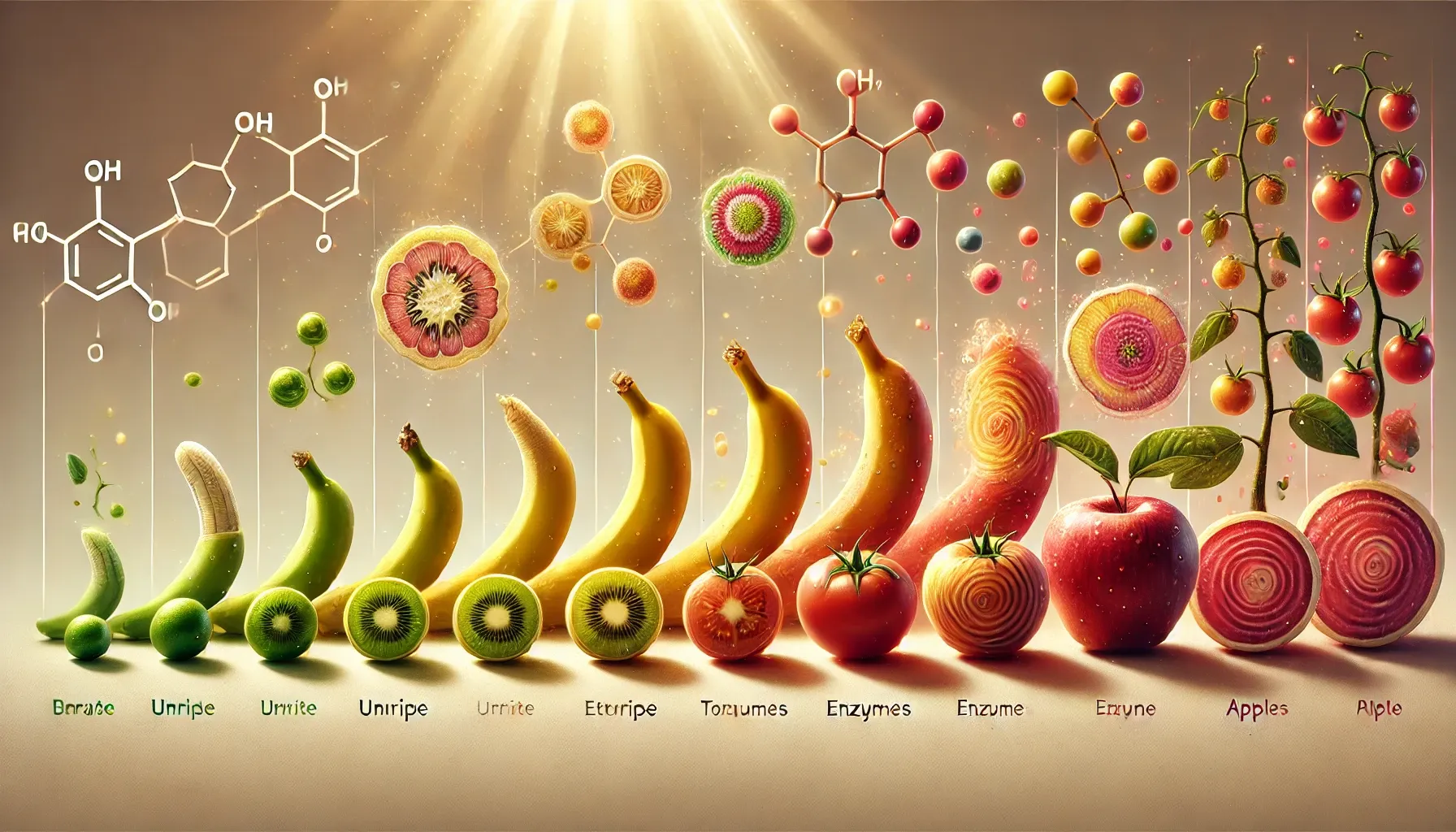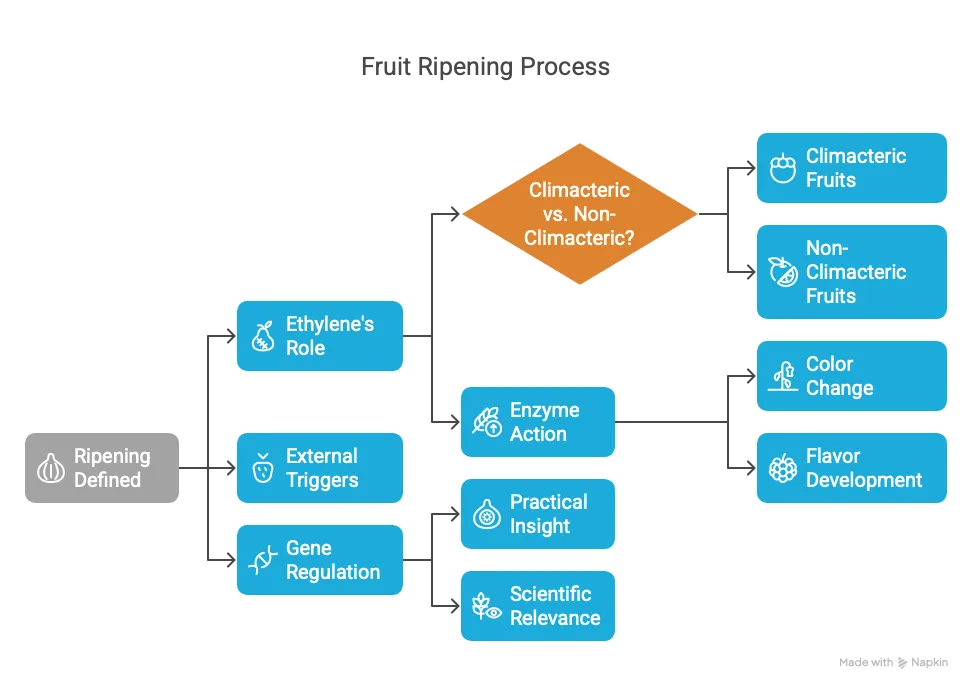UPSC
The Hindu Briefs
Understanding Fruit Ripening: A Scientific Overview
Last Updated
8th April, 2025
Date Published
8th April, 2025
Share This Post With Someone


- Ripening Defined: Ripening is a natural process where fruits become sweeter, softer, and more palatable due to biochemical changes after reaching maturity.
- Ethylene’s Role: The gaseous plant hormone ethylene triggers ripening by initiating metabolic processes in fruits, produced naturally by growing plant tissues.
- Climacteric vs. Non-Climacteric: Climacteric fruits (e.g., mango, banana) ripen post-harvest with ethylene, while non-climacteric fruits (e.g., grapes, citrus) do not.
- Enzyme Action: Enzymes like amylases convert starch to sugar, pectinases soften fruit by breaking down pectin, and hydrolases alter texture and flavor.
- Color Change: Chlorophyll degrades during ripening, and new pigments form, shifting fruit color from green to vibrant hues like red or yellow.
- Flavor Development: Acids break down, reducing sourness, while sugars increase, and volatile compounds enhance aroma, making fruits more appealing.
- External Triggers: Picking mature green fruit can stimulate ethylene production due to wounding, accelerating the ripening process naturally.
- Gene Regulation: Ethylene regulates gene expression, activating enzymes that drive changes in texture, color, and taste during ripening.
- Practical Insight: Storing unripe fruits with ripe ones in a closed space hastens ripening as ethylene from ripe fruits affects the unripe ones.
- Scientific Relevance: Understanding ripening aids in agriculture, storage, and transport, ensuring fruit quality and reducing post-harvest losses.
Glossary
- Ethylene: A plant hormone in gas form that regulates growth and ripening processes.
- Climacteric: Fruits that continue ripening after harvest due to ethylene production.
- Non-Climacteric: Fruits that do not ripen further once picked, lacking ethylene surge.
- Enzymes: Proteins that speed up biochemical reactions, like breaking down starch or pectin.
- Pectin: A structural carbohydrate in fruit cell walls, degraded during ripening to soften texture.
Link To The Original Article – https://www.thehindu.com/sci-tech/science/how-do-fruits-ripen/article69426640.ece